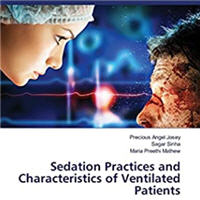Tag: oxygenation
Effect of High-Flow Oxygen Therapy vs Conventional Oxygen Therapy on Invasive Mechanical Ventilation and Clinical Recovery in Patients With Severe COVID-19
An overall good trial that supports the use of high flow oxygen therapy in patients with Severe COVID-19. Randomized controlled trial conducted across three centers in Columbia over 5 months from August 2020 to January... read more
Respiratory Drive in Sepsis and Septic Shock Patients: Modulation by High-flow Nasal Cannula
Patients with sepsis and septic shock of extrapulmonary origin present elevated respiratory drive and effort, which can be effectively reduced by high-flow nasal cannula. 25 nonintubated patients with extrapulmonary sepsis... read more
Ventilation in Patients with Intra-abdominal Hypertension
The incidence of intra-abdominal hypertension (IAH) is high and still underappreciated by critical care physicians throughout the world. One in four to one in three patients will have IAH on admission, while one out of... read more
Intubation Practice and Outcomes Among Pediatric Emergency Departments
While tracheal intubation (TI) characteristics vary between pediatric Emergency Departments and ICUs, outcomes are similar. Shock and limited mouth opening were independently associated with adverse TI events in the Emergency... read more
High-Flow Oxygen Therapy vs. Conventional Oxygen Therapy on Invasive Mechanical Ventilation in COVID-19 Patients
Among patients with severe COVID-19, use of high-flow oxygen through a nasal cannula significantly decreased need for mechanical ventilation support and time to clinical recovery compared with conventional low-flow oxygen... read more
Non-invasive vs. Invasive Respiratory Management Strategies in AHRF Patients
When performing non-invasive ventilation among patients with de novo acute hypoxaemic respiratory failure (AHRF), it is important to avoid excessive tidal volume and lung injury. Although pressure support is needed for... read more
Oxygenation Responses Mechanisms to Proning and Recruitment in COVID-19 Pneumonia
In unresolving COVID-19 pneumonia, the respiratory mechanics and the gas-exchange response to prone positioning and recruitment largely depend on the following two factors: perfusion dysregulation and the amount of consolidated... read more
The Pulmonary Artery Catheter: A Solution Still Looking For a Problem
In 1970, Jeremy Swan, William Ganz, and colleagues published their seminal paper “Catheterization of the heart in man with use of flow-directed balloon-tipped catheter”. Few devices in our specialty have generated more... read more
No Extra Risk For Transferring ECMO COVID-19 Patients
Previous experience has shown that transporting patients on extracorporeal membrane oxygenation (ECMO) is a safe and effective mode of transferring critically ill patients requiring maximum mechanical ventilator support to... read more
High Flow Nasal Oxygen: A Rising Star Waiting To Be Discovered
High flow nasal oxygen therapy (HFNO2) is gaining popularity of late and rapidly recognised as new oxygen therapy in the treatment of respiratory failure, and the fame exploded exponentially after the COVID-19 pandemic. HFNO2... read more
Head Rotation in Anaesthetised Apnoeic Patients Significantly Increases Mask Ventilation Efficiency
Head rotation of 45° in anaesthetised apnoeic adults significantly increases the efficiency of mask ventilation compared with the neutral head position. Head rotation is an effective alternative to improve mask ventilation... read more
Interhospital Transfer of COVID-19 Patients Treated with High-flow Nasal Oxygen Therapy
At the start of the COVID-19 pandemic, early intubation was recommended on the basis of worldwide observations of severe hypoxemia. However, some patients were ultimately able to benefit from high-flow nasal cannula (HFNC)... read more
Approach to the Critically Ill Poisoned Patient
Toxicology histories are notoriously unreliable. Any available medical records, especially medication lists. Timing & amount of ingestions. Immediate vs. sustained-release formulations. Consider inquiring specifically... read more
Understanding Brain Injury in Pediatric ECMO
Brain injury is frequent in extracorporeal membrane oxygenation patients, although the majority of survivors have favorable neurocognitive outcomes. More research is needed in order to understand the etiology of such... read more
ECMO for COVID-19
Mortality after ECMO for patients with COVID-19 worsened during 2020. These findings inform the role of extracorporeal membrane oxygenation (ECMO) in COVID-19 for patients, clinicians, and policy makers. In 2020, 4,812... read more
Higher vs. Lower PEEP in ARDS Patients
In our meta-analysis of RCTs, higher positive end-expiratory pressure (PEEP), compared with lower PEEP, was not associated with mortality in patients without acute respiratory distress syndrome (ARDS) receiving invasive mechanical... read more
COVID-19 and Anticoagulation: Full Dose or Prophylactic Dose?
In CRITICALLY ILL patients with COVID-19, an initial strategy of therapeutic-dose anticoagulation is not associated with a greater probability of survival to hospital discharge or a greater number of days free of cardiovascular... read more
Use of Bivalirudin for Anticoagulation in Pediatric ECMO
This study describes the use of bivalirudin in children on extracorporeal membrane oxygenation (ECMO). Pediatric patients receiving bivalirudin were compared to patients receiving heparin as the anticoagulant on ECMO. Data... read more
Expanding ECMO Cannulation Strategies in Neonatal Respiratory Failure
Infants with refractory respiratory failure who require extracorporeal membrane oxygenation (ECMO) have traditionally been cannulated via the venoarterial route or by using a dual-lumen venovenous cannula in the right internal... read more
Adaptive Randomized Controlled Trial of Non-invasive Respiratory Strategies in ARF Patients with COVID-19
Continuous positive airway pressure (CPAP), compared with conventional oxygen therapy, reduced the composite outcome of intubation or death within 30 days of randomisation in hospitalized adults with acute respiratory failure... read more
Sedation Practices and Characteristics of Ventilated Patients
Patients on mechanical ventilator experience anxiety and physiological stress. Sedating them can help those patients to cope up with ET tube, to bear all the interventions, for accessing adequate oxygenation and above... read more

A Rational Approach on the use of ECMO in Severe Hypoxemia
Veno-venous extracorporeal membrane oxygenation (ECMO) is a helpful intervention in patients with severe refractory hypoxemia either because mechanical ventilation cannot ensure adequate oxygenation or because lung protective... read more









